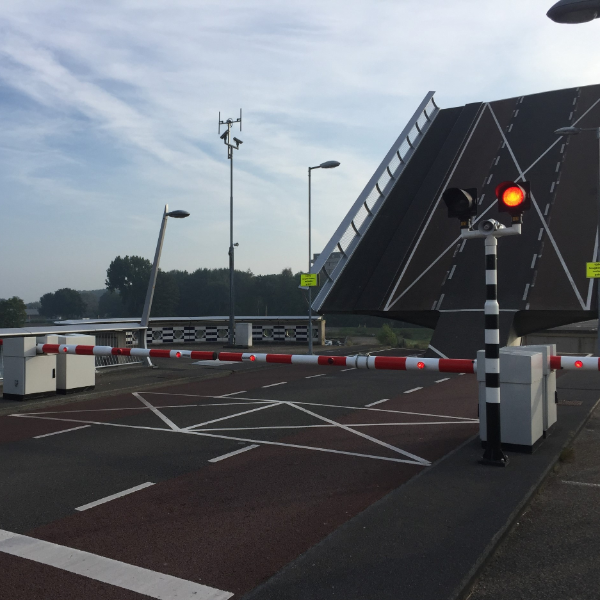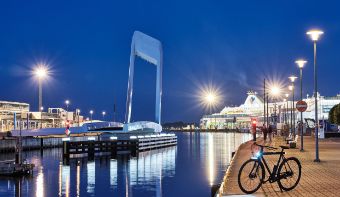Movable bridges

Movable bridges
Movable bridges come in all shapes and sizes. What all movable bridges have in common is that they are multidisciplinary objects. Due to the movement of the decks, systems and their controls are required for the operation of the bridge. Besides the knowledge of civil engineers, collaboration with mechanical engineers, electrical engineers and automation specialists is crucial to complete a movable bridge project.
Important aspects include jointly understanding the interplay of forces, especially when opening and closing the bridge, and fitting the machinery and control cabinets into the whole. Witteveen+Bos has all disciplines in-house and can therefore advise on movable bridges from preliminary design to works supervision or implementation design.
We have experience in the design of many different types of movable bridges, including, for instance, drawbridges, bascule bridges, lift bridges and swing bridges. Our clients include both property owners and contractors undertaking projects in an integrated form. For projects involving movable bridges, we are increasingly working with these clients in construction teams. We are a crucial pivot in designing the bridge together with the client and contractor.
Drawbridges
The majority of movable bridges with relatively limited spans are drawbridges. These have a balance structure above the deck of the bridge. The operating mechanism of these bridges ranges from manually operated (a chain on the bridge) to hydraulic or electromechanical mechanisms. Among other projects, Witteveen+Bos is involved in the design and tendering of the work on the drawbridges at Cruquius, southeast of Haarlem. This project involved the renovation of one of the two bridges and the replacement of the other by a new bridge, according to the principles of IFD (industrial, flexible and demountable) building. Witteveen+Bos was responsible for the planning stage, the tender for a construction team and contributed to the construction team.
Bascule bridges
Unlike drawbridges, bascule bridges are much less conspicuous. The balance structure of these bridges is located in a basement under the road, hiding it from view when driving over the bridge. This type of bridge is very common on motorways. These locations involve large spans and wide decks. An example of large bascule bridges we have worked on are the Leeghwater bridges on the N242 (North Holland). As with the Cruquius bridges, this was a combination of a new bridge and a renovated bridge. Witteveen+Bos designed a completely new bridge to replace the oldest bridge. A new deck of fibre-reinforced plastics was designed of the second bridge. This bridge was completed in 2020 and is now fully operational.
Lift bridges
More rare, but notable, are lift bridges. In the case of lift bridges, the deck is lifted straight up by a number of towers. The largest lift bridge in the Netherlands is the Botlek Bridge. Witteveen+Bos produced the final design of the operating mechanism of the Botlek Bridge for the contractor consortium A-Lanes. This bridge was completed in 2015.
Of a different order of magnitude is the Nelson Mandela Bridge in Utrecht. Together with Delft Infra Composites, we designed a fully fibre-reinforced plastic deck for this lift bridge. A steel structure was used only between the lifting towers on both sides of the water. The Nelson Mandela Bridge was completed in 2024.
Swing bridges
The last type of movable bridge is the swing bridge. A symmetrical swing bridge is a classic solution for wider waterways with two-way traffic. Witteveen+Bos, on the other hand, has designed modern asymmetrical swing bridges. An iconic pedestrian and bicycle foot bridge has been designed in the port of Tallinn, Estonia, connecting the port to the city centre.
In Ritsumasyl, as part of the Haak om Leeuwarden project, a bicycle bridge was designed to give bicycle and pedestrian traffic a more comfortable route. This bridge is made of biobased plastics. Glass or carbon fibre has been replaced by a natural flax material. This too is an asymmetrical swing bridge. Because of the use of these new materials, this bridge is still being carefully monitored since it was commissioned.
More information?

